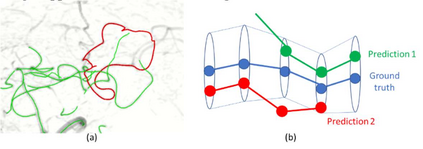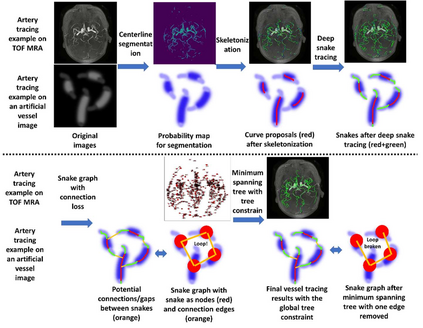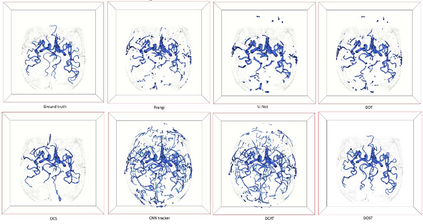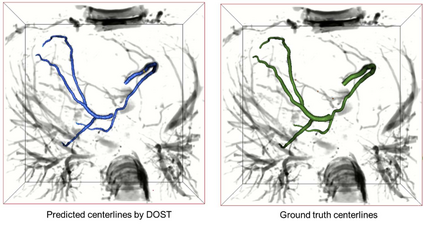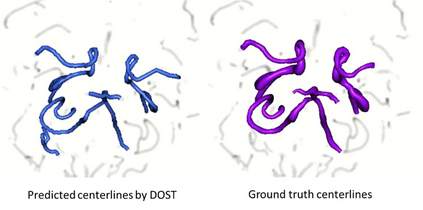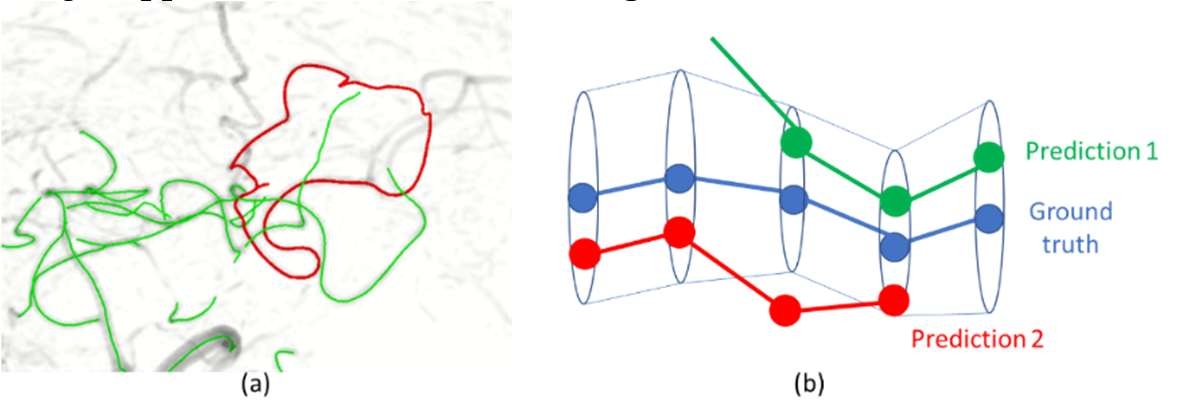Vessel tracing by modeling vascular structures in 3D medical images with centerlines and radii can provide useful information for vascular health. Existing algorithms have been developed but there are certain persistent problems such as incomplete or inaccurate vessel tracing, especially in complicated vascular beds like the intracranial arteries. We propose here a deep learning based open curve active contour model (DOST) to trace vessels in 3D images. Initial curves were proposed from a centerline segmentation neural network. Then data-driven machine knowledge was used to predict the stretching direction and vessel radius of the initial curve, while the active contour model (as human knowledge) maintained smoothness and intensity fitness of curves. Finally, considering the nonloop topology of most vasculatures, individually traced vessels were connected into a tree topology by applying a minimum spanning tree algorithm on a global connection graph. We evaluated DOST on a Time-of-Flight (TOF) MRA intracranial artery dataset and demonstrated its superior performance over existing segmentation-based and tracking-based vessel tracing methods. In addition, DOST showed strong adaptability on different imaging modalities (CTA, MR T1 SPACE) and vascular beds (coronary arteries).
翻译:现有算法已经制定,但存在某些长期问题,例如船舶追踪不完全或不准确,特别是在复杂的血管床,如室内动脉动脉等复杂的血管床。我们在此建议采用基于深学习的开放曲线活轮廓模型(DOST),以3D图像跟踪船只。初步曲线是从中线神经网络中建议出来的。然后,数据驱动机知识被用来预测最初曲线的伸展方向和船体半径,而主动轮廓模型(作为人类知识)则保持曲线的平滑和强度。最后,考虑到大多数血管的无边表层,个别跟踪的船舶通过在全球连接图上应用最低限度的树宽度算法,与树木表相连接。我们用时光线(TOF)对DOST进行了初步曲线评估,并展示了其优于现有基于分段和跟踪的船舶轨迹的轨迹半径。此外,DOST还展示了不同的MSAS 和MSA 图像模型(DOST) 。

